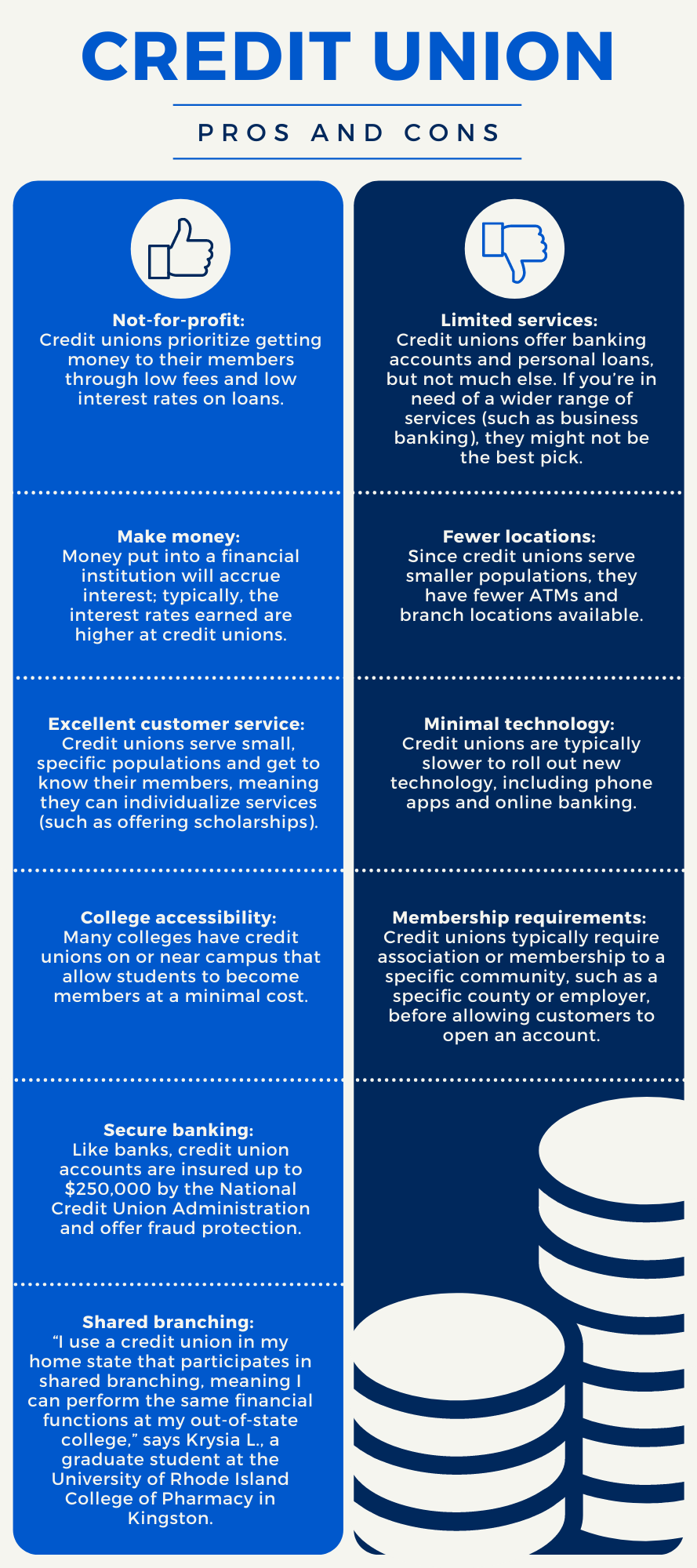Hybrid Line of Credit: Flexible Funding Options from Your Wyoming Credit Union
Hybrid Line of Credit: Flexible Funding Options from Your Wyoming Credit Union
Blog Article
The Ultimate Guide to Recognizing Lending Institution
Credit score unions stand as unique financial entities, rooted in principles of shared assistance and member-driven procedures. As we browse via the intricacies of credit history unions, an insightful journey waits for to shed light on these member-focused institutions and exactly how they vary from standard financial institutions.
What Are Cooperative Credit Union?
Cooperative credit union are member-owned financial institutions that use a variety of financial services to their participants. Unlike conventional financial institutions, lending institution run as not-for-profit organizations, meaning their key emphasis gets on serving their members as opposed to taking full advantage of revenues. Participants of a lending institution usually share a typical bond, such as benefiting the exact same company, coming from the very same community, or belonging to the very same company.
One of the key advantages of cooperative credit union is that they typically offer greater rate of interest on financial savings accounts and reduced rate of interest on lendings compared to financial institutions. This is since lending institution are structured to profit their participants straight, allowing them to pass on their earnings in the type of better prices and fewer charges. Furthermore, lending institution are recognized for their individualized customer care, as they prioritize constructing relationships with their participants to comprehend their unique monetary demands and goals.
Background and Evolution of Cooperative Credit Union

The roots of member-owned monetary cooperatives, known today as cooperative credit union, trace back to a time when communities looked for choices to standard banking institutions. The concept of credit scores unions come from the 19th century in Europe, with Friedrich Wilhelm Raiffeisen often credited as the pioneer of the participating banking motion (Credit Unions Cheyenne). Raiffeisen founded the initial acknowledged cooperative credit union in Germany in the mid-1800s, emphasizing community support and self-help concepts
The development of credit rating unions proceeded in The United States and Canada, where Alphonse Desjardins established the initial lending institution in Canada in 1900. Quickly after, in 1909, the first united state cooperative credit union was developed in New Hampshire by a group of Franco-American immigrants. These early credit report unions operated the basic principles of shared assistance, democratic control, and participant possession.
With time, debt unions have expanded in appeal worldwide due to their not-for-profit framework, concentrate on offering members, and providing affordable monetary items and solutions. Today, lending institution play an important duty in the financial industry, offering easily accessible and community-oriented banking choices for services and people alike.
Subscription and Qualification Requirements
Subscription at a credit scores union is usually limited to individuals fulfilling certain eligibility standards based on the organization's founding concepts and governing needs. Some credit rating unions might only serve individuals that function or live in a particular Federal Credit Union area, while others may be customized to staff members of a specific company or participants of a particular organization.
Additionally, credit history unions are structured as not-for-profit organizations, indicating that their primary objective is to serve their participants instead of create profits for investors. This concentrate on member solution commonly translates into even more customized focus, lower fees, and competitive rates of interest on financings and savings accounts. By fulfilling the qualification criteria and ending up being a participant of a cooperative credit union, individuals can access a series of monetary items and services tailored to their certain demands.
Services and Products Used
Among the key facets that establishes cooperative credit union apart is the diverse series of monetary product and services they use to their members. Credit score unions typically give standard financial solutions such as cost savings and inspecting accounts, finances, and charge card. Participants can likewise take advantage of investment solutions, consisting of pension and financial planning aid. Several lending institution supply affordable rates of interest on savings accounts and loans, in addition to lower fees contrasted to standard banks.
Furthermore, credit rating unions usually offer hassle-free online and mobile banking alternatives for members to quickly manage their funds. They may use perks such as common branching, permitting participants to access their accounts at various other credit scores unions throughout the country. Some cooperative credit union likewise give insurance coverage items like home, life, and auto insurance to assist participants protect their properties and loved ones.
In enhancement to economic services, cooperative credit union frequently participate in neighborhood outreach programs and monetary education and learning campaigns to sustain their members in accomplishing their monetary objectives.
Advantages of Financial With Cooperative Credit Union
When thinking about monetary organizations, discovering the benefits of financial with cooperative credit union reveals one-of-a-kind advantages for participants looking for tailored solution and affordable prices. One considerable advantage of cooperative credit union is their focus on customized customer solution. Unlike huge banks, credit score unions are member-owned and focus on structure strong partnerships with their participants. This indicates that lending institution team commonly have a much deeper understanding of their participants' monetary needs and can offer customized options to assist them achieve their objectives. In addition, lending institution are understood for providing competitive rates of interest on fundings and cost savings accounts. Due to the fact that they are not-for-profit companies, credit history unions can typically provide lower loan prices, higher savings prices, and lower fees contrasted to typical financial institutions. This can lead to substantial cost financial savings for members over time. Generally, banking with a credit union can give a much more customized, cost-effective, and member-centric financial experience.
Final Thought

Credit report unions are member-owned economic institutions that supply a range of banking services to their participants. The principle of credit rating unions come from in the 19th century in Europe, with Friedrich Wilhelm Raiffeisen often credited as the pioneer of the cooperative banking motion.The advancement of credit unions continued in North America, where Alphonse Desjardins developed the initial credit rating union in Canada in 1900. Credit history unions normally give traditional banking services such as savings and checking accounts, lendings, and credit report cards.When thinking about monetary organizations, checking out the advantages of banking with credit score unions exposes distinct benefits for participants seeking customized service and affordable prices.
Report this page